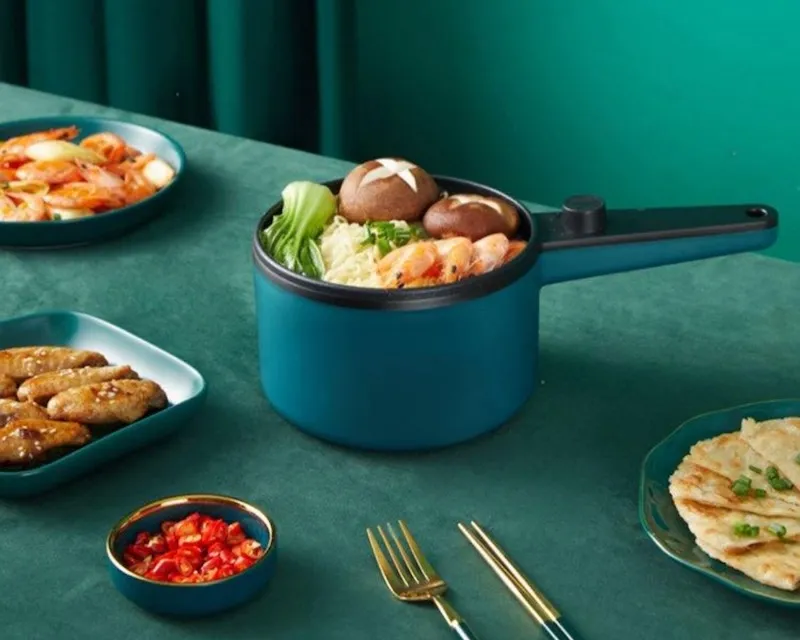The Art of Heat Management
In Chinese culinary philosophy, huo hou (火候) represents the precise orchestration of heat and time - the defining factor that separates adequate cooking from exceptional wok mastery. This ancient concept combines thermodynamics with culinary intuition, requiring cooks to balance three critical elements:
The Three Pillars of Huo Hou
1. Thermal Energy Source
- Primary heat generators: gas flames, electric coils, or induction fields
- Measured by combustion intensity (for gas) or wattage (for electric)
2. Heat Transfer Medium
- Direct contact: wok surface
- Indirect mediums: oil, steam, or air
- Conductivity varies by material (carbon steel > cast iron > non-stick)
3. Temporal Control
- Searing: 30-90 seconds at 400°F+ (204°C+)
- Stir-frying: 2-5 minutes at 350-400°F (177-204°C)
- Braising: 30+ minutes at 200-250°F (93-121°C)
Fire Levels in Professional Kitchens
Chinese chefs recognize four distinct fire intensities:
1. Jí Huǒ (急火 - Emergency Fire)
- Temperature: 500-650°F (260-343°C)
- Characteristics:
- Vertical flames 6-8 inches high
- Blue-white flame core
- Audible roaring sound
- Best For:
- Wok seasoning
- Quick-searing proteins
- Achieving wok hei
2. Dà Huǒ (大火 - Big Fire)
- Temperature: 400-500°F (204-260°C)
- Characteristics:
- 4-6 inch yellow-orange flames
- Moderate roaring
- Best For:
- Standard stir-frying
- Vegetable blanching
- Noodle tossing
3. Zhōng Huǒ (中火 - Middle Fire)
- Temperature: 300-400°F (149-204°C)
- Characteristics:
- 2-4 inch red flames
- Intermittent flame fluctuations
- Best For:
- Aromatics (garlic/ginger)
- Thick sauces reduction
- Multi-stage cooking
4. Wēn Huǒ (文火 - Cultural Fire)
- Temperature: 200-300°F (93-149°C)
- Characteristics:
- Flickering 1-2 inch flames
- Silent combustion
- Best For:
- Slow braising
- Flavor infusion
- Keeping dishes warm
Practical Heat Management Techniques
The Temperature Matrix
| Ingredient Type | Ideal Fire Level | Cooking Time | Oil Smoke Point |
|---|---|---|---|
| Leafy Greens | Jí Huǒ | 45-60s | 450°F (232°C) |
| Root Vegetables | Dà Huǒ | 2-3m | 400°F (204°C) |
| Tender Proteins | Zhōng Huǒ | 4-5m | 350°F (177°C) |
| Tough Cuts | Wēn Huǒ | 45-60m | 300°F (149°C) |
Fire Adjustment Methods
Fuel Control
- Gas: Adjust valve position (1/4 turn increments)
- Electric: Use pulse-heating technique
Wok Positioning
- Center: Maximum heat exposure
- Rim: Gradual temperature reduction
Lid Utilization
- Trap heat for steaming effect
- Release moisture to lower temperature
Common Mistakes & Solutions
Problem: Uneven Cooking
- Solution: Implement “Three Zone Cooking”:
- Hot zone (center) for searing
- Medium zone (lower sides) for cooking
- Warm zone (upper sides) for resting
Problem: Flare-ups
- Solution: Use the “Oil Trail Method”:
- Pour oil along heated wok rim
- Tilt wok to create flowing oil layer
Problem: Heat Loss
- Solution: Apply “Thermal Banking”:
- Alternate between high heat bursts and rest periods
- Maintain average 50°F (10°C) above target temp
Advanced Application: Five-Stage Heat Control
Master this sequence for complex dishes:
- Blast Heat (Ji Huo) - Wok seasoning
- Peak Heat (Da Huo) - Protein searing
- Modulated Heat (Zhong Huo) - Vegetable cooking
- Controlled Heat (Wen Huo) - Sauce thickening
- Residual Heat (Yu Re) - Final flavor blending
Conclusion
True wok mastery comes from understanding that heat control isn’t just about temperatures - it’s about choreographing energy transfer through space and time. As you practice these techniques, you’ll develop the ability to:
- Visually assess flame patterns
- Anticipate thermal carryover
- Make micro-adjustments through wok movement
Remember: The wok is an extension of your hand, and the fire is your dance partner. With patience and persistence, you’ll transform raw ingredients into culinary poetry through the art of huo hou.
